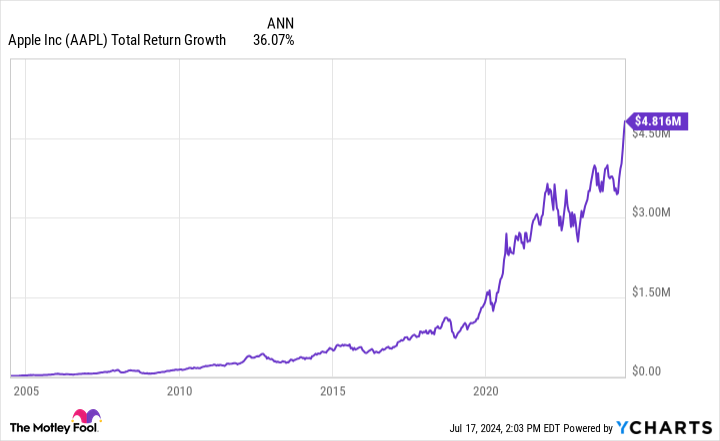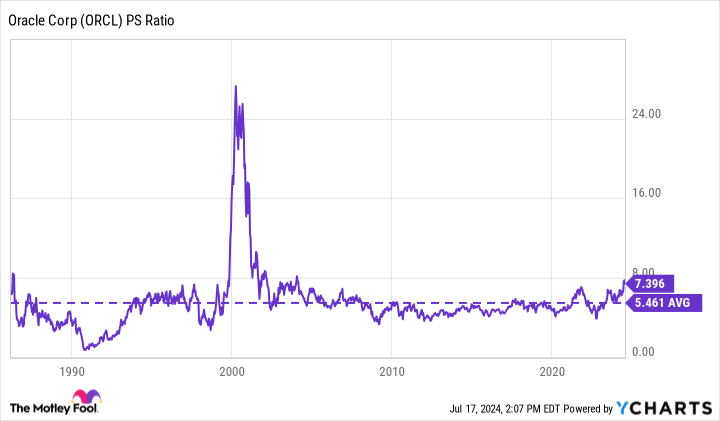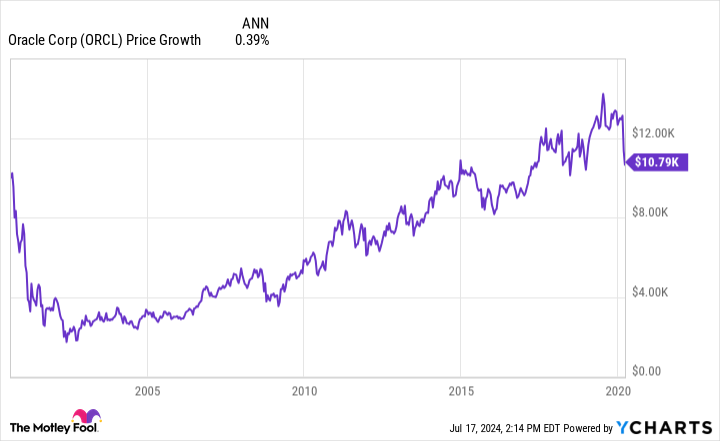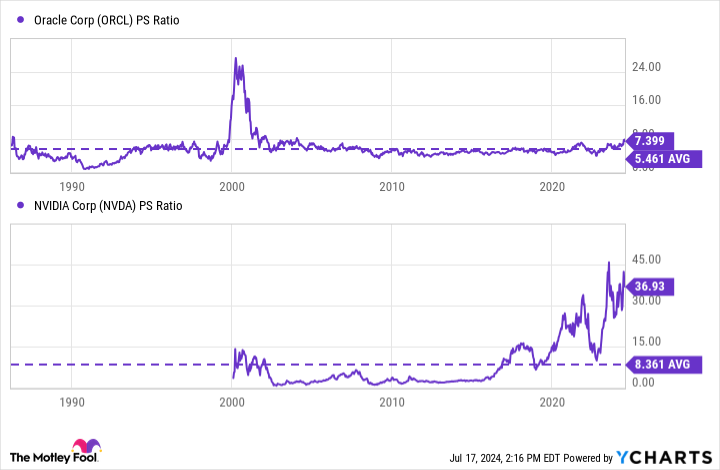Table of Contents
There’s one stock everyone wants to talk about: Nvidia (NASDAQ: NVDA). And with good reason. The stock is up almost 1,000% in less than two years, meaning a $10,000 investment at the end of 2022 would be worth almost $100,000 today.
While no one can predict what will happen, there are two paths forward for Nvidia. One path is promising; the other is downright terrifying. Let’s dive in and see what’s more likely.


The bull case: Nvidia is Apple circa 2004
The bull case for Nvidia goes something like this: Artificial Intelligence (AI) is the story of the next twenty years. It will bring about changes in the way people interact at levels equal to or greater than what the smartphone brought about in the mid-2000s. Therefore, the best historical comparison is for Nvidia Apple in 2004.
At the time, Apple’s hot new product was – wait for it – the ipod. Remember that? The company wouldn’t debut its first iPhone for another three years.
Nevertheless, Apple was already well on its way to becoming the largest company in the world. In 2004, the stock grew by more than 200%, making it the top player in the sector S&P500.
From 2004 to today it is Market capitalization has increased at a compound annual growth rate (CAGR) of 36%. A $10,000 investment made twenty years ago would be worth $4.8 million today.
It would be incredibly difficult for Nvidia to repeat that feat, but it is possible. AI is a fascinating new technology, and twenty years is a very long time, giving the company plenty of room to meet the high expectations surrounding its stock.
But what about the bear case?
The bear case: Nvidia is Oracle circa 2000
Here’s the bear case for Nvidia: AI is a promising technology, but overhyped. Due to the higher valuations of AI stocks, a stock market bubble has formed, and if it bursts, Nvidia stock will feel the pain. In short, that’s what Nvidia is today Oracle in 2000.
To summarize, the 1990s were full of hope for the internet. The stock market in particular loved internet stocks. Valuations soared, not just for brand new companies, but also for older tech companies that benefited from the Internet craze.
In particular, Oracle, whose business focused on facilitating the transition from mid-century mainframe computers to modern servers for enterprise customers, saw its shares skyrocket in the late 1990s.
Unfortunately for Oracle, expectations were far ahead of actual sales. At its peak in 2000, the stock traded with a price-to-sales ratio (P/S) of 24, well above its lifetime average of 5.
When the Internet bubble burst in 2001, Oracle suffered an 85% decline. The stock has taken more than 20 years to recover its pre-bubble high. Those who bought in the summer of 2000 and held on until 2020 would have made almost no money on their investment.
The lesson is that even companies with the most promising technological innovations and solid business models do not necessarily make large investments.
So what is it?
On the one hand, Nvidia’s price-to-earnings ratio bears an eerie similarity to Oracle’s in the run-up to the 2001 crash.
That should give any Nvidia bull pause. Simply put, stocks are now so expensive that some moderation needs to take place.
Either the company’s sales will continue to grow like crazy to bring the ratio down, or the stock price will have to fall. Factors such as increased competition, market saturation, or a slowdown in AI and semiconductor spending could lower Nvidia’s price-to-earnings ratio.
My feeling is that it is the latter, although the party can continue for a while. Regardless, I recommend being cautious with Nvidia stock.
Unlike many of its mega-cap peers, the company does not have a well-diversified business model. Stocks are performing well as spending on AI and semiconductors is skyrocketing, but that trend could slow down – especially if the economy worsens or enters a recession.
Furthermore, if demand for AI and semiconductor technology were to decline, Nvidia’s stock could be in for a rough ride – perhaps as bad as Oracle’s 23 years ago.
Should You Invest $1,000 in Nvidia Now?
Consider the following before buying shares in Nvidia:
The Motley Fool stock advisor The analyst team has just identified what they think is the 10 best stocks for investors to buy now… and Nvidia wasn’t one of them. The ten stocks that survived the cut could deliver monster returns in the coming years.
Think about when Nvidia created this list on April 15, 2005… if you had $1,000 invested at the time of our recommendation, you would have $741,989!*
Stock Advisor provides investors with an easy-to-follow blueprint for success, including portfolio building guidance, regular analyst updates and two new stock picks per month. The Stock Advisor is on duty more than quadrupled the return of the S&P 500 since 2002*.
*Stock Advisor returns July 15, 2024
Jake Lerch has positions at Nvidia. The Motley Fool holds positions in and recommends Apple, Nvidia, and Oracle. The Motley Fool has one disclosure policy.
Where will Nvidia stock be in twenty years? was originally published by The Motley Fool




